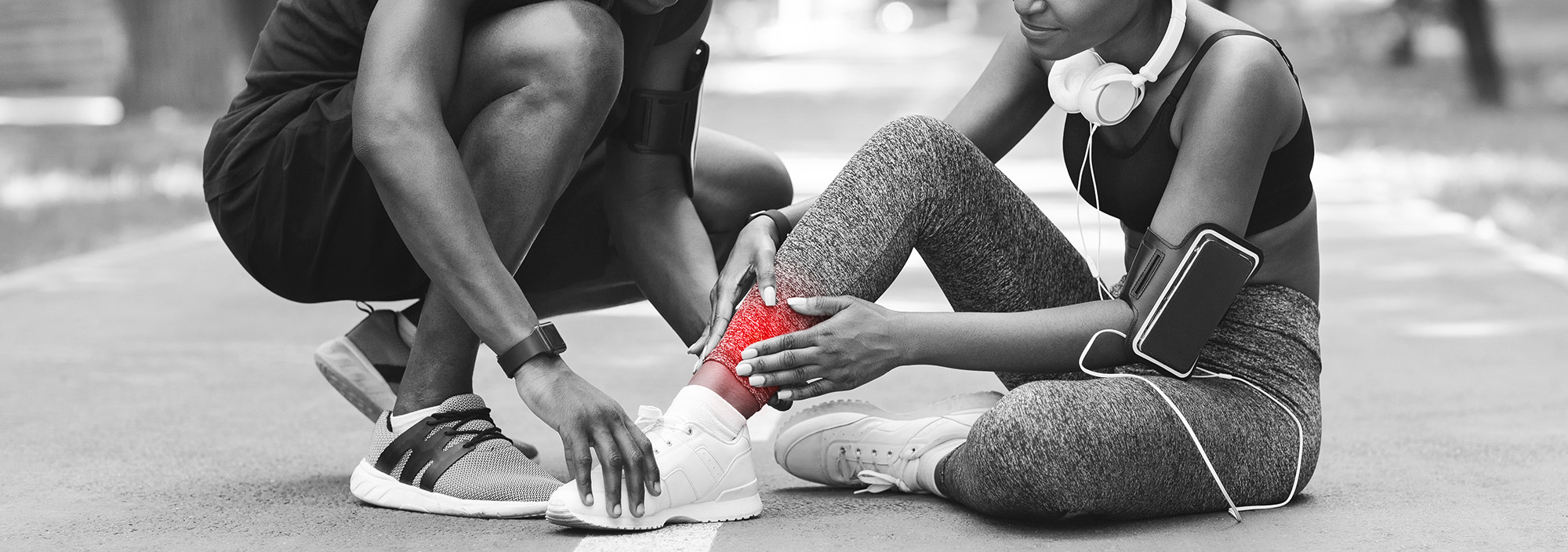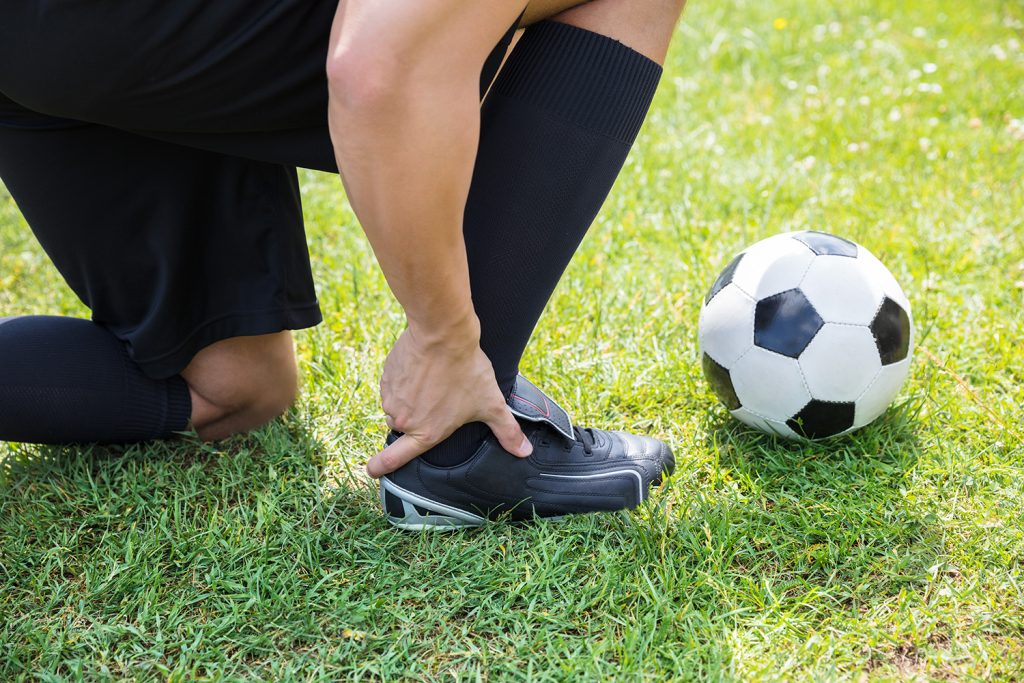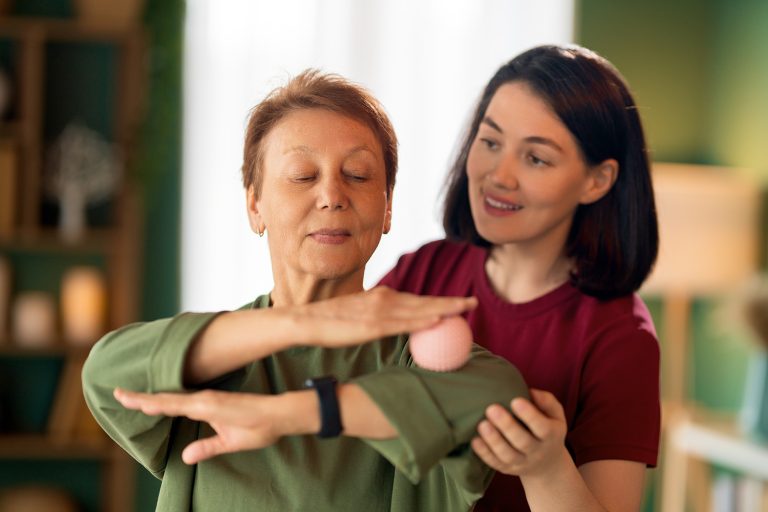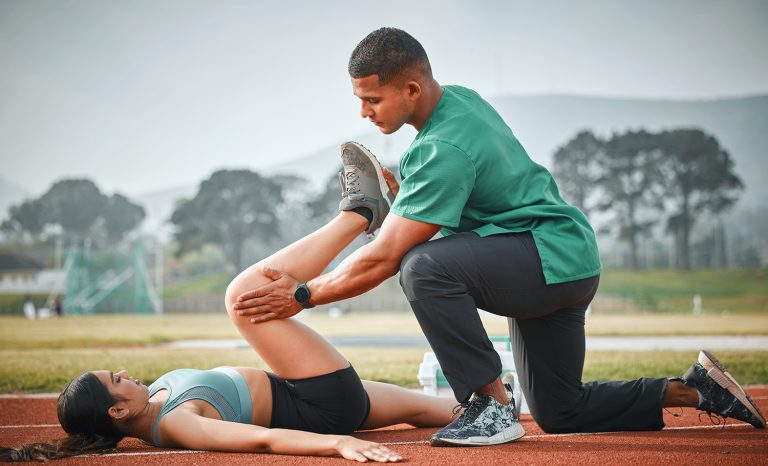

5 Ways to Know You Can Return to Sport Following Ankle Sprain
An ankle sprain is a common injury in recreational and competitive sports. In fact ankle sprains are so common many people don’t think they need to seek any special medical attention. People address these injuries by using an over the counter brace, icing, resting from sports and limping around for a few days. These are all reasonable steps to take following an ankle sprain. Many people; however, fail to realize deficits that arise following an ankle sprain injury that are best addressed by a professional.
Ankle sprains can cause various levels of injury to the bones and ligaments that stabilize the ankle. You can find out more about injury caused by an ankle sprain on our blog. But what do you do once the pain has resolved and you are walking normally, without a limp. How can you know when it is safe to return to sports?
FACTS about an ankle sprain
- Athletes are at increased risk for re-injury during the first year following an initial ankle sprain. Some literature states the risk is 4 times greater while others report an 80% rate of repeat injury.
- Recurrence of lateral ankle sprain is one of the highest rates among all musculoskeletal injuries.
- A high proportion of people having a lateral ankle sprain go on to develop chronic ankle instability.

When can I return to sports?
There is no specific amount of time that you need to wait to return to sports since every ankle sprain creates differing severity of injury and impairments. Someone with a mild sprain may return to sport in 1-2 weeks, while it may take 6 weeks to 3 months for someone with a more severe sprain to be ready. There are a few guidelines; however, that you can follow.
ROM: Your range of motion should be equal to your other ankle especially with lifting the ball of the foot upward called dorsiflexion.
STRENGTH: You should have enough strength to perform 10 heel raises on the affected foot through full ROM. There are other strength parameters throughout your leg and hip that you should have assessed by your physical therapist.
BALANCE: You should be able to balance on the toes of your foot for 20 seconds and with foot flat and your eyes closed for at least 10 seconds. This allows sensitive receptors in your ankle to provide quick feedback to your brain about your ankle position. It is these receptors that are important in preventing future ankle sprains during high level sports activity or when running on uneven surfaces. You should also be able to hop on one foot an equivalent distance as you do on your other foot.
AGILITY: You should be able to run forward, backward and side to side quickly and without pain. If your sport requires explosive jumping then you should also be able to perform these activities in a practice environment without pain before returning to your sport.
READINESS: You should no longer feel any sense of fear or uncertainty prior to returning to sport. If you do, performing drills and scrimmages until you are confident about your abilities is an important part of preparing for return to play. You should also gradually return to your previous level of activity if you have not maintained your cardiovascular and fitness levels. It is also important to manage your sport load and mental load. Participating in 2 sports at one time increases your load and may lead to re-injury.
When you do return to your sport, you should wear a lace up ankle support brace for up to 6 months. Be sure that you have the appropriate supportive shoe wear for your specific sport.
If you are involved in sports play, having a personal physical therapist is an important part of your athletic development. Your physical therapist will perform a variety of clinical assessments and functional tests to be sure that your ankle has recovered the strength and stability you need for your sport participation. They can advise you if you need further training to manage the stresses placed on your foot during your sport in order to prevent re-injury or permanent instability.
Since recurrent ankle sprains are correlated with returning to sport play too soon, it is important to make an informed decision and be sure you are ready. Your coach and your physical therapist can help you with these decisions.
References
How to Come Back Stronger and Faster After an Ankle Sprain
Posted on Wednesday, August 31, 2016 by UVM Health Network – CVMC https://www.cvmc.org/blog/rehabilitation-therapy/how-come-back-stronger-and-faster-after-ankle-sprain
Clanton TO, Matheny LM, Jarvis HC, Jeronimus AB. Return to play in athletes following ankle injuries. Sports Health. 2012 Nov;4(6):471-4. doi: 10.1177/1941738112463347. PMID: 24179584; PMCID: PMC3497954.
Bruno Tassignon, Jo Verschueren, Eamonn Delahunt, Michelle Smith, Bill Vicenzino, Evert Verhagen, Romain Meeusen. Criteria‑Based Return to Sport Decision‑Making Following Lateral Ankle Sprain Injury: a Systematic Review and Narrative Synthesis. Sports Medicine. 2019 Feb;49:601–619.
Wilkstrom EA, Mueller C, Cain MS. Lack of Consensus on Return-to-Sport Criteria Following Lateral Ankle Sprain: A Systematic Review of Expert Opinions. Journal of Sport Rehabilitation. 2020;29,231-237. doi.org/10.1123/jsr.2019-0038
Please Share
categories
Recent Posts

5 Ways to Know You Can Return to Sport Following an Ankle Sprain
An ankle sprain is a common injury in recreational and competitive sports. In fact ankle sprains are so common many people don’t think they need to seek any special medical attention. People address these injuries by using an over the counter brace, icing, resting from sports and limping around for a few days. These are all reasonable steps to take following an ankle sprain. Many people; however, fail to realize deficits that arise following an ankle sprain injury that are best addressed by a professional.
Ankle sprains can cause various levels of injury to the bones and ligaments that stabilize the ankle. You can find out more about injury caused by an ankle sprain on our blog. But what do you do once the pain has resolved and you are walking normally, without a limp. How can you know when it is safe to return to sports?
FACTS about an ankle sprain
- Athletes are at increased risk for re-injury during the first year following an initial ankle sprain. Some literature states the risk is 4 times greater while others report an 80% rate of repeat injury.
- Recurrence of lateral ankle sprain is one of the highest rates among all musculoskeletal injuries.
- A high proportion of people having a lateral ankle sprain go on to develop chronic ankle instability.

When can I return to sports?
There is no specific amount of time that you need to wait to return to sports since every ankle sprain creates differing severity of injury and impairments. Someone with a mild sprain may return to sport in 1-2 weeks, while it may take 6 weeks to 3 months for someone with a more severe sprain to be ready. There are a few guidelines; however, that you can follow.
ROM: Your range of motion should be equal to your other ankle especially with lifting the ball of the foot upward called dorsiflexion.
STRENGTH: You should have enough strength to perform 10 heel raises on the affected foot through full ROM. There are other strength parameters throughout your leg and hip that you should have assessed by your physical therapist.
BALANCE: You should be able to balance on the toes of your foot for 20 seconds and with foot flat and your eyes closed for at least 10 seconds. This allows sensitive receptors in your ankle to provide quick feedback to your brain about your ankle position. It is these receptors that are important in preventing future ankle sprains during high level sports activity or when running on uneven surfaces. You should also be able to hop on one foot an equivalent distance as you do on your other foot.
AGILITY: You should be able to run forward, backward and side to side quickly and without pain. If your sport requires explosive jumping then you should also be able to perform these activities in a practice environment without pain before returning to your sport.
READINESS: You should no longer feel any sense of fear or uncertainty prior to returning to sport. If you do, performing drills and scrimmages until you are confident about your abilities is an important part of preparing for return to play. You should also gradually return to your previous level of activity if you have not maintained your cardiovascular and fitness levels. It is also important to manage your sport load and mental load. Participating in 2 sports at one time increases your load and may lead to re-injury.
When you do return to your sport, you should wear a lace up ankle support brace for up to 6 months. Be sure that you have the appropriate supportive shoe wear for your specific sport.
If you are involved in sports play, having a personal physical therapist is an important part of your athletic development. Your physical therapist will perform a variety of clinical assessments and functional tests to be sure that your ankle has recovered the strength and stability you need for your sport participation. They can advise you if you need further training to manage the stresses placed on your foot during your sport in order to prevent re-injury or permanent instability.
Since recurrent ankle sprains are correlated with returning to sport play too soon, it is important to make an informed decision and be sure you are ready. Your coach and your physical therapist can help you with these decisions.
References
How to Come Back Stronger and Faster After an Ankle Sprain
Posted on Wednesday, August 31, 2016 by UVM Health Network – CVMC https://www.cvmc.org/blog/rehabilitation-therapy/how-come-back-stronger-and-faster-after-ankle-sprain
Clanton TO, Matheny LM, Jarvis HC, Jeronimus AB. Return to play in athletes following ankle injuries. Sports Health. 2012 Nov;4(6):471-4. doi: 10.1177/1941738112463347. PMID: 24179584; PMCID: PMC3497954.
Bruno Tassignon, Jo Verschueren, Eamonn Delahunt, Michelle Smith, Bill Vicenzino, Evert Verhagen, Romain Meeusen. Criteria‑Based Return to Sport Decision‑Making Following Lateral Ankle Sprain Injury: a Systematic Review and Narrative Synthesis. Sports Medicine. 2019 Feb;49:601–619.
Wilkstrom EA, Mueller C, Cain MS. Lack of Consensus on Return-to-Sport Criteria Following Lateral Ankle Sprain: A Systematic Review of Expert Opinions. Journal of Sport Rehabilitation. 2020;29,231-237. doi.org/10.1123/jsr.2019-0038
Please Share






